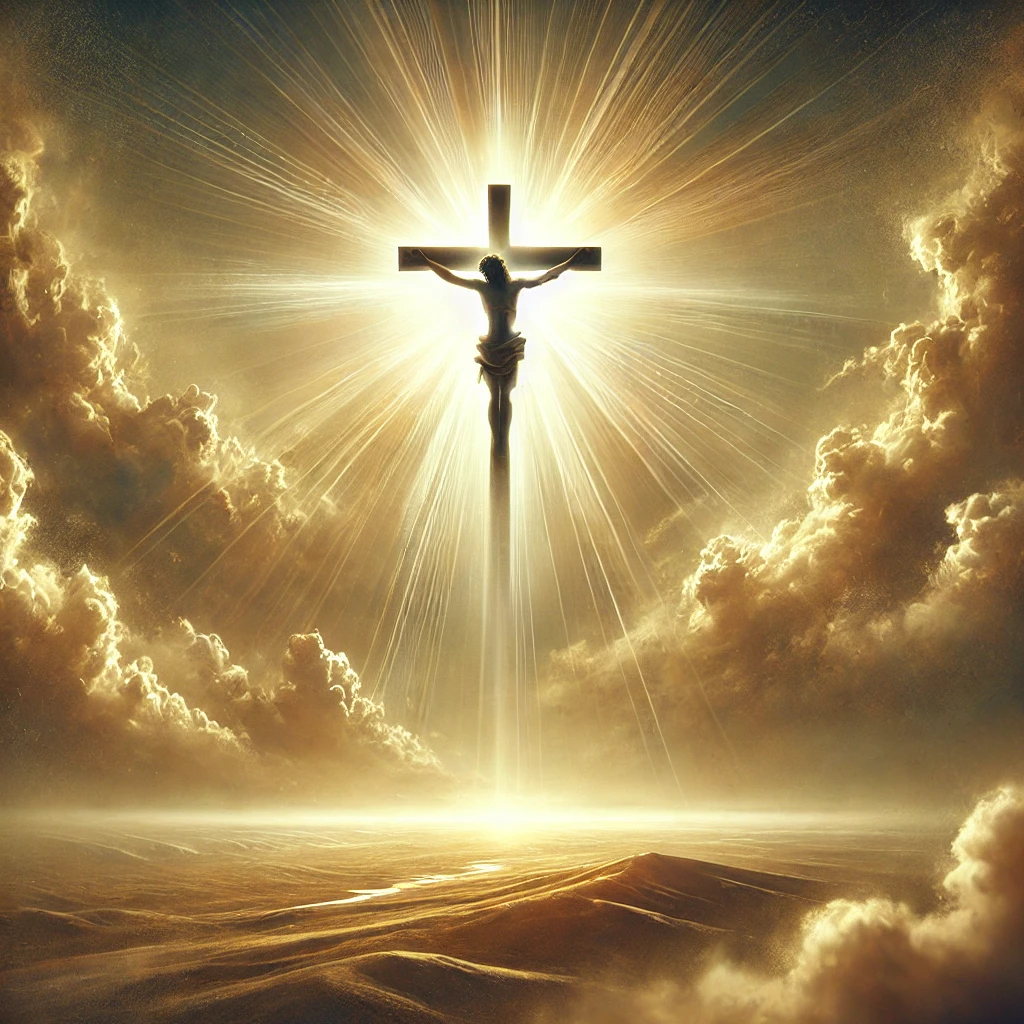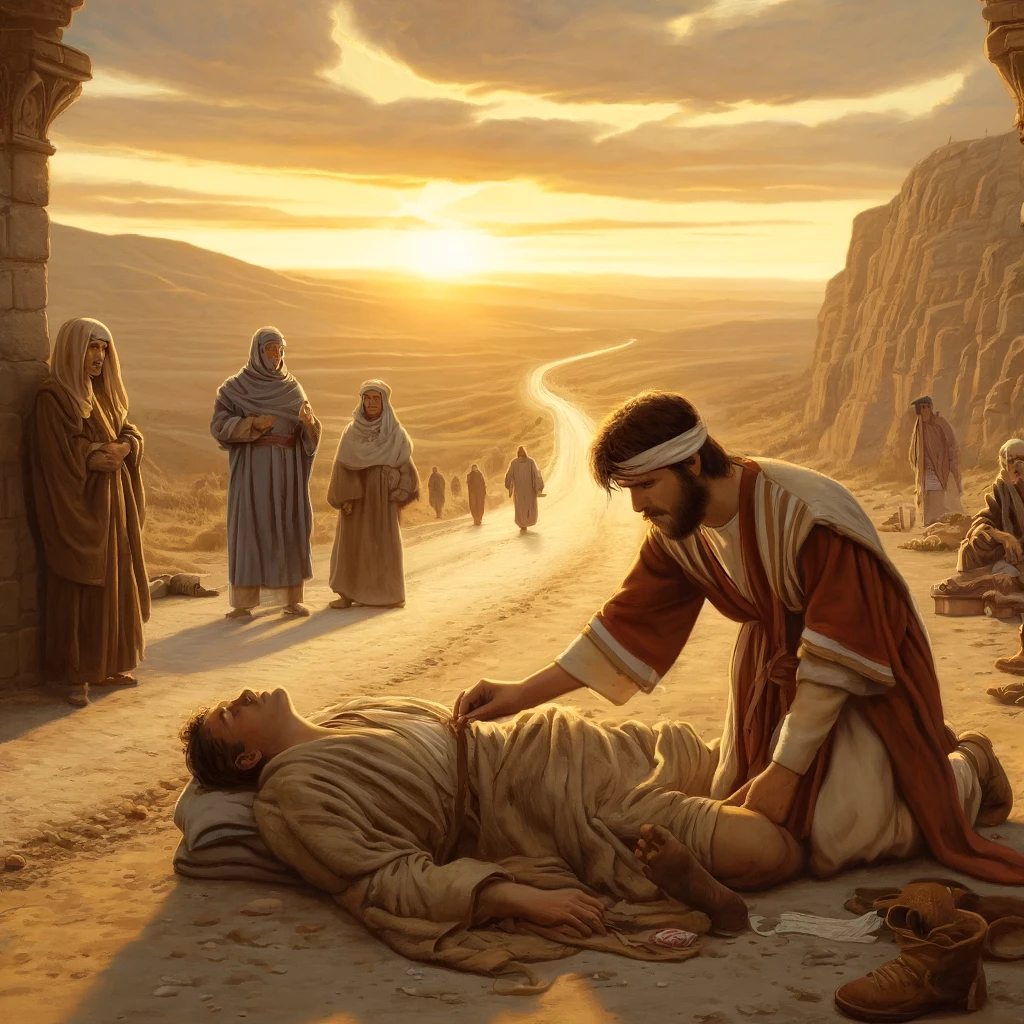Ever found yourself wondering, “If Jesus was so powerful, why didn’t He just zap Himself off that cross?” Well, you’re not alone! It’s a question that’s puzzled minds for centuries. Did you know that Jesus actually said He could have called down 12 legions of angels to rescue Him? That’s over 72,000 angels! 😇 But He chose not to. Why? Buckle up, because we’re about to dive deep into one of the most profound acts of love in history. Trust me, by the end of this, you’ll see the cross in a whole new light. Get ready for a mind-blowing journey that might just change your life! 🌟🙏
The Prophecy Fulfilled: Jesus’ Mission from the Beginning
The story of Jesus’ crucifixion isn’t just a moment in time—it’s the fulfillment of a mission that was set into motion long before He even walked the earth. In fact, the entire Bible points toward the cross as the climax of God’s plan for humanity’s redemption. From the very beginning, God had a rescue plan in mind, and it was woven through the prophecies of the Old Testament.
Old Testament Prophecies About the Messiah’s Suffering
Centuries before Jesus was born, prophets spoke of a Messiah who would suffer and die for the sins of the world. One of the clearest prophecies is found in Isaiah 53, where it describes the Messiah as “a man of sorrows, acquainted with grief” (Isaiah 53:3). He would be “pierced for our transgressions” and “crushed for our iniquities” (Isaiah 53:5). Every detail of Jesus’ suffering and death was foretold, showing us that the cross wasn’t a random tragedy—it was the fulfillment of God’s promises.
Jesus’ Own Predictions About His Death and Resurrection
As Jesus traveled and taught, He didn’t shy away from the subject of His death. In fact, He predicted it several times. In Matthew 16:21, Jesus began to explain to His disciples that He must go to Jerusalem and suffer many things, eventually being killed and raised to life on the third day. Even though His disciples struggled to understand, Jesus was clear that His death was part of His mission—a necessary step in God’s plan to save humanity.
The Divine Plan of Redemption Set Before the Foundation of the World
One of the most mind-blowing truths in Scripture is that God’s plan to redeem humanity wasn’t a last-minute fix. Revelation 13:8 refers to Jesus as “the Lamb who was slain from the foundation of the world.” Before creation, before sin entered the world, God already knew what it would take to save us, and He chose to follow through with that plan. The cross wasn’t a reaction—it was a divine appointment set long before time began.
The Power of Choice: Jesus’ Voluntary Sacrifice
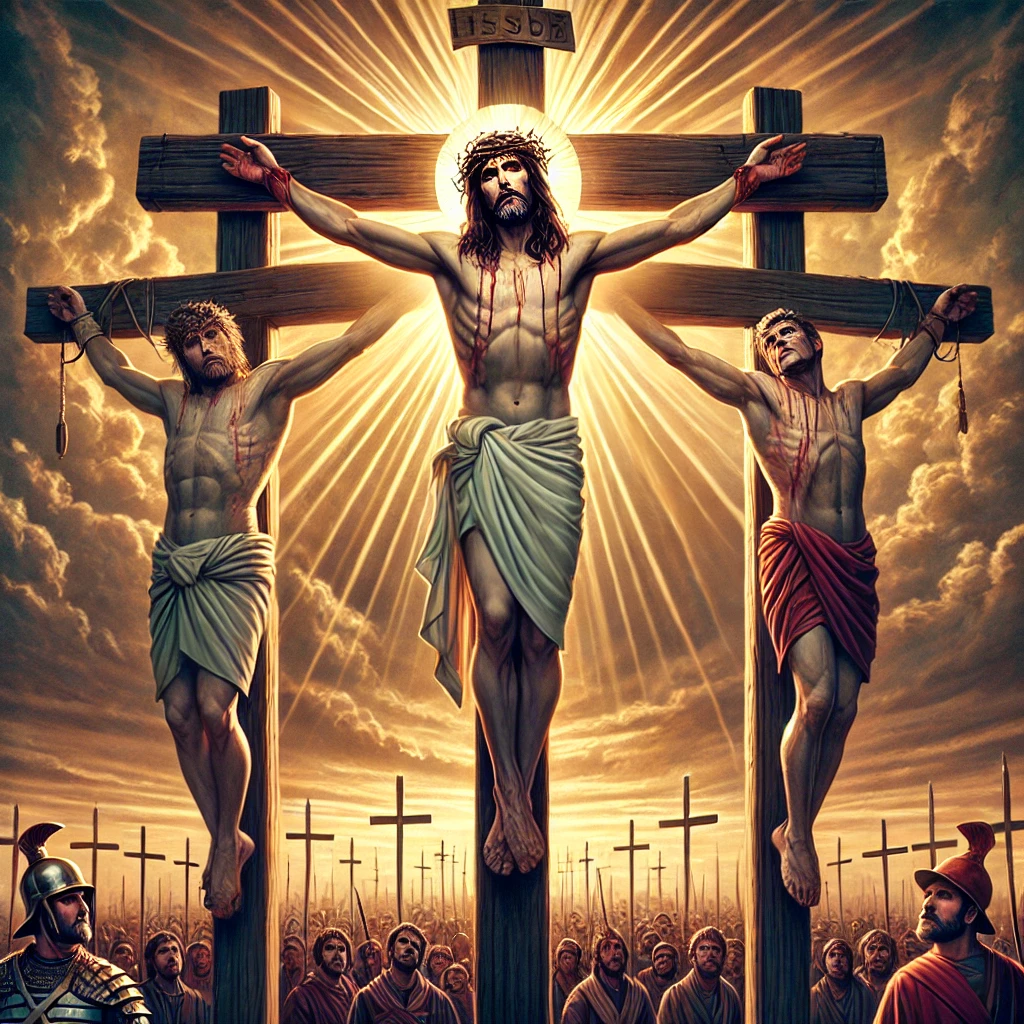
What makes Jesus’ sacrifice so powerful is that He chose it. He wasn’t a helpless victim; He willingly laid down His life. In a world that often views power as the ability to control or escape suffering, Jesus demonstrated that real power is found in the choice to sacrifice for the sake of love.
Gethsemane: The Struggle and Submission to God’s Will
The night before Jesus was crucified, He spent time in the Garden of Gethsemane praying. This moment gives us a window into the depth of His struggle. Jesus knew what lay ahead—the physical pain of the cross, the emotional agony of being forsaken, and the weight of humanity’s sin. In Matthew 26:39, Jesus prayed, “My Father, if it is possible, may this cup be taken from me. Yet not as I will, but as You will.” This prayer reveals His very real human emotions, yet also His perfect submission to God’s will. In this moment, we see that Jesus wasn’t driven to the cross by fate—He chose to submit to the Father’s plan out of love for us.
Jesus’ Statement About Laying Down His Life Willingly
Jesus made it clear to His followers that no one was taking His life from Him. In John 10:18, He said, “No one takes it from me, but I lay it down of my own accord.” This statement shows us the heart of His sacrifice. He wasn’t forced onto the cross—He willingly laid down His life so that we might live. He had the power to call down legions of angels, yet He chose to stay, demonstrating the depth of His love and the importance of fulfilling the Father’s will.
The Theological Concept of Jesus’ Two Natures: Fully God and Fully Man
One of the central truths of the Christian faith is that Jesus is both fully God and fully man. This means that, while He had the power of God, He also experienced the full range of human emotions and pain. In His humanity, Jesus felt the fear, anguish, and physical suffering that came with crucifixion. But as God, He had the authority to choose this path, knowing it would lead to redemption for all who believe. His dual nature allowed Him to serve as the perfect mediator between God and humanity, offering a sacrifice that was both human and divine.
The Legal and Spiritual Necessity of the Cross
The cross wasn’t just a symbolic gesture—it was a legal and spiritual necessity. It fulfilled the demands of justice, paid the penalty for sin, and opened the way for humanity to be reconciled with God. Understanding the necessity of the cross helps us grasp the gravity of what Jesus did and the depth of God’s mercy.
Sin’s Penalty and the Need for a Perfect Sacrifice
In Romans 6:23, we’re told, “The wages of sin is death.” Sin separates us from God, and the penalty for sin is death—not just physical death but spiritual separation from God. Under the Old Testament law, sacrifices were made to atone for sin, but these sacrifices were temporary. They pointed to the need for a perfect, once-and-for-all sacrifice. Jesus became that sacrifice, the Lamb without blemish, who would take away the sins of the world (John 1:29). His death on the cross satisfied the penalty of sin, offering forgiveness and eternal life to all who trust in Him.
The Concept of Substitutionary Atonement
Substitutionary atonement is the idea that Jesus took our place on the cross. We were the ones who deserved death because of our sin, but Jesus stepped in as our substitute. In 2 Corinthians 5:21, it says, “God made him who had no sin to be sin for us, so that in him we might become the righteousness of God.” This means that Jesus bore the full weight of God’s wrath against sin so that we wouldn’t have to. He paid the price we could never pay, offering us freedom and reconciliation with God.
Fulfilling the Requirements of Divine Justice and Mercy
God is both perfectly just and perfectly merciful. His justice requires that sin be punished, but His mercy longs to forgive. The cross is where these two attributes meet. Jesus’ sacrifice satisfied God’s justice by paying the penalty for sin, while also displaying God’s mercy by offering forgiveness to all who repent and believe. In Romans 3:25-26, Paul explains that the cross allowed God to be “just and the justifier of the one who has faith in Jesus.” The cross shows us that God takes sin seriously, but His love for us is even greater.
Love Beyond Measure: The Heart of Jesus’ Sacrifice
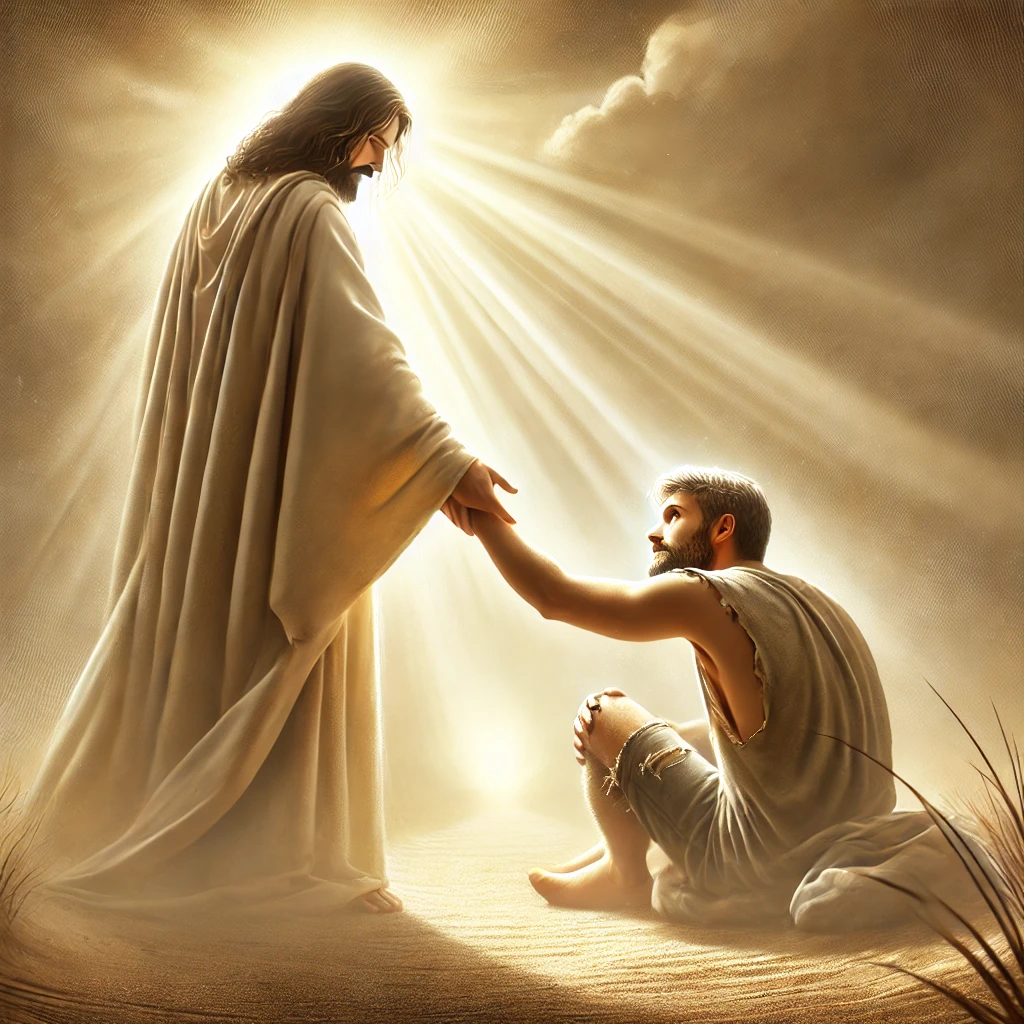
At the heart of the cross is love—love that goes beyond anything we can fully comprehend. Jesus’ sacrifice wasn’t just about fulfilling legal requirements; it was a demonstration of the greatest love the world has ever known.
“Greater Love Has No One Than This…” – Unpacking John 15:13
In John 15:13, Jesus said, “Greater love has no one than this: to lay down one’s life for one’s friends.” This verse perfectly captures the essence of the cross. Jesus willingly laid down His life, not just for His disciples, but for all of humanity. He saw the brokenness, the sin, and the rebellion in us, and He loved us enough to pay the ultimate price. This kind of love isn’t just an emotion—it’s a choice, an action, and the greatest demonstration of love in history.
The Cross as the Ultimate Expression of God’s Love for Humanity
The cross stands as the ultimate expression of God’s love for humanity. In Romans 5:8, Paul writes, “But God demonstrates his own love for us in this: While we were still sinners, Christ died for us.” Jesus didn’t wait for us to clean ourselves up or earn His love—He died for us while we were still lost in our sin. The cross tells us that no one is beyond the reach of God’s love and that His love is willing to go to any length to bring us back to Him.
How Jesus’ Sacrifice Demonstrates the Value God Places on Each Soul
When we look at the cross, we see the value God places on each of us. If Jesus was willing to suffer and die for you, then your life must be incredibly valuable in His eyes. No matter how unworthy we may feel, the cross shows us that we are worth dying for. It’s a reminder that God’s love isn’t based on our performance or our worthiness—it’s based on His character and His desire to be in relationship with us.
The Defeat of Evil: Triumph Through Apparent Defeat
At first glance, the cross looks like a moment of defeat. Jesus, the Messiah, was mocked, tortured, and crucified by His enemies. But what appeared to be a loss was, in fact, the greatest victory in history—a triumph over sin, death, and Satan.
The Cross as a Cosmic Battle Against Sin, Death, and Satan
The cross wasn’t just a physical event—it was a spiritual battle. Throughout the Gospels, we see hints that Jesus’ mission was to defeat the powers of darkness. On the cross, He took on the full weight of sin and evil, breaking their power once and for all. Colossians 2:15 tells us that Jesus “disarmed the powers and authorities” and “made a public spectacle of them, triumphing over them by the cross.” What looked like a defeat was actually a victory in the cosmic battle against evil.
How Jesus’ Death Paradoxically Led to Victory Over Evil
Jesus’ death on the cross was a paradox—a defeat that led to victory. Satan may have thought that killing Jesus would stop God’s plan, but in reality, it was the very thing that brought salvation to humanity and defeat to the forces of darkness. By dying, Jesus broke the power of death. In Hebrews 2:14, we’re told that “by His death, He might break the power of him who holds the power of death—that is, the devil.” The cross wasn’t the end of the story—it was the beginning of the ultimate triumph over evil.
The Concept of Christus Victor in Christian Theology
In Christian theology, the concept of Christus Victor (Latin for “Christ the Victor”) emphasizes that Jesus’ death and resurrection were not just about forgiveness—they were about victory over the forces of sin and evil. The cross was the decisive blow in a war that had been raging since the fall of humanity. Through His sacrifice, Jesus claimed victory, not only for Himself but for all who trust in Him. The empty tomb is proof that death and evil don’t have the final say—Jesus does.
Breaking the Power of Sin: Freedom Through Sacrifice
The cross was more than a symbol of suffering; it was the means through which Jesus broke the chains of sin and set us free. In His sacrifice, Jesus made a way for us to experience true freedom—freedom from the power of sin and death. This victory wasn’t just for the first-century believers but continues to transform lives today.
How Jesus’ Death Provides Forgiveness and Cleansing from Sin
When Jesus died on the cross, He took upon Himself the sin of the world. As the perfect, sinless sacrifice, He paid the price that we could never pay. 1 John 1:7 tells us, “The blood of Jesus, His Son, purifies us from all sin.” Through His death, Jesus offers us not just forgiveness but cleansing—He washes away our sins and makes us new. This means that no matter how broken or guilty we may feel, the cross offers us a fresh start. We are no longer defined by our past; we are made clean by the sacrifice of Christ.
The Transformative Power of the Cross in Believers’ Lives
The cross isn’t just about an event that happened 2,000 years ago; it has ongoing power in our lives today. When we accept Jesus’ sacrifice, we are not only forgiven, but we are transformed. Romans 6:6 says, “For we know that our old self was crucified with Him so that the body ruled by sin might be done away with, that we should no longer be slaves to sin.” The cross breaks the power of sin over our lives, allowing us to live in the freedom that Christ offers. It’s not just a one-time event—it’s a daily reality of living in the victory that Jesus won.
The Concept of “Dying to Self” Inspired by Jesus’ Example
Jesus’ death on the cross wasn’t just a model of sacrifice; it was also an invitation for us to follow in His footsteps. In Luke 9:23, Jesus said, “Whoever wants to be my disciple must deny themselves and take up their cross daily and follow me.” This idea of “dying to self” means letting go of our own desires and living for God’s will. Just as Jesus surrendered His will in Gethsemane, we are called to surrender our lives to God, trusting that His plan for us is far greater than anything we could imagine.
Reconciliation and Restoration: Bridging the Divine-Human Gap
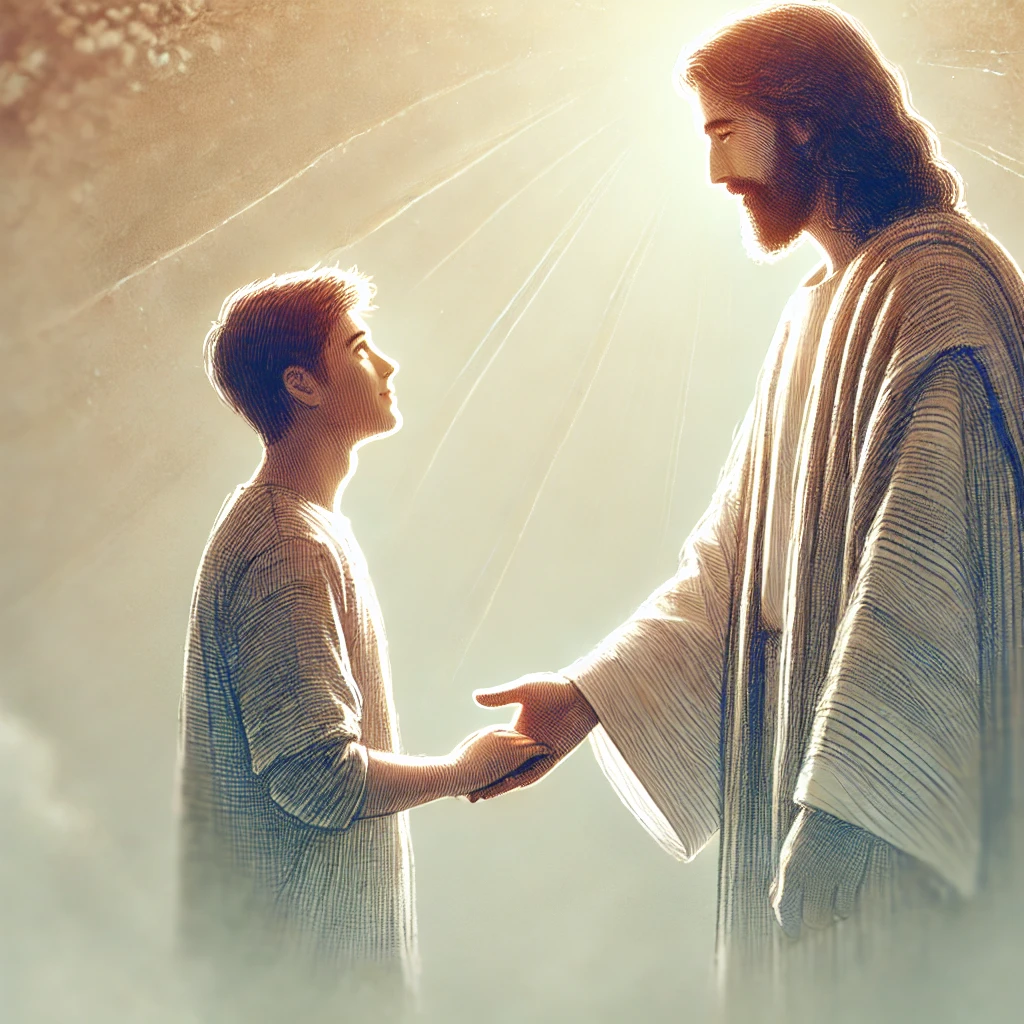
The cross wasn’t just about paying a debt—it was about restoring a broken relationship. Humanity had been separated from God by sin, but through Jesus’ sacrifice, that divide was bridged. The cross is where reconciliation happens, where we are brought back into fellowship with God.
The Cross as the Means of Reconciling Humanity to God
Because of sin, humanity was alienated from God, unable to come into His presence. But through the cross, Jesus made a way for us to be reconciled to the Father. In 2 Corinthians 5:18, Paul writes, “All this is from God, who reconciled us to Himself through Christ.” The cross wasn’t just about forgiveness—it was about restoring the relationship that sin had broken. Through Jesus, we are no longer distant from God; we are brought near, adopted into His family as sons and daughters.
Tearing of the Temple Veil: New Access to God’s Presence
One of the most powerful moments in the crucifixion story is the tearing of the temple veil (Matthew 27:51). The veil in the temple separated the Holy of Holies—the place where God’s presence dwelled—from the rest of the people. Only the high priest could enter, and even then, only once a year. But when Jesus died, that veil was torn in two from top to bottom, signifying that the barrier between God and humanity had been removed. Through Jesus, we now have direct access to God’s presence. Hebrews 10:19-20 tells us that we can “enter the Most Holy Place by the blood of Jesus, by a new and living way opened for us.”
The Establishment of a New Covenant Through Jesus’ Blood
Jesus’ death on the cross wasn’t just the end of the old covenant; it was the beginning of a new one. In Luke 22:20, during the Last Supper, Jesus said, “This cup is the new covenant in my blood, which is poured out for you.” The new covenant is based on grace, not law. It’s a covenant where we are not saved by our works, but by faith in the finished work of Christ. Through His blood, we are made righteous, and the promises of God are now available to all who believe.
The Example of Obedience: Jesus’ Submission to the Father’s Will
Throughout His life and ministry, Jesus demonstrated perfect obedience to the Father. His journey to the cross is the ultimate example of submission and trust in God’s plan, even when that plan involved great suffering. Jesus’ obedience wasn’t just about fulfilling a mission—it was about showing us what it looks like to fully trust and follow God, no matter the cost.
“Not My Will, but Yours Be Done” – The Ultimate Act of Obedience
One of the most powerful moments of Jesus’ obedience is found in His prayer in Gethsemane. Knowing the pain and suffering that awaited Him, Jesus prayed, “Father, if you are willing, take this cup from me; yet not my will, but yours be done” (Luke 22:42). This prayer shows us that obedience isn’t always easy. Jesus felt the weight of what was coming, but He chose to trust the Father’s will over His own desires. In doing so, He set an example for all of us. Obedience to God’s will may lead us into difficult or uncomfortable places, but it’s in those places that we find true purpose and fulfillment.
How Jesus’ Sacrifice Demonstrates Perfect Trust in the Father
Jesus’ willingness to go to the cross shows us what perfect trust in the Father looks like. He didn’t run from the cross, even though He had the power to avoid it. Instead, He trusted that the Father’s plan was good, even when it involved suffering. This challenges me to think about my own life—how often do I resist God’s will because it doesn’t align with my own comfort or plans? Jesus teaches us that real trust means following God, even when it’s hard, believing that His ways are always higher than ours.
The Call for Believers to Follow Jesus’ Example of Surrender
Jesus’ obedience to the Father wasn’t just for His own sake—it was an example for us to follow. In Philippians 2:8, Paul writes that Jesus “humbled himself by becoming obedient to death—even death on a cross!” As believers, we are called to that same kind of surrender. It doesn’t mean we’ll always understand or even enjoy what God asks of us, but it does mean that we trust Him fully. Jesus invites us to take up our cross and follow Him (Matthew 16:24), not in fear, but in faith, knowing that God’s plans for us are always good.
The Glorification of God: Revealing Divine Love and Justice
The cross wasn’t just about saving humanity—it was also about glorifying God. Through Jesus’ sacrifice, the attributes of God were put on full display—His love, His justice, His mercy, and His holiness. The cross reveals who God is in a way that nothing else can.
How the Cross Uniquely Displays God’s Attributes
At the cross, we see God’s love and justice perfectly intertwined. In His justice, He could not simply overlook sin—it had to be dealt with. But in His love, He chose to deal with it through the sacrifice of His own Son. Romans 3:25-26 explains that the cross allows God to be both “just and the one who justifies those who have faith in Jesus.” In this one act, God showed His absolute commitment to both holiness and mercy. The cross shows us the fullness of who God is—righteous, yet loving; just, yet compassionate.
The Paradox of God’s Wrath and Love Met at the Cross
One of the great paradoxes of the cross is that it is both an expression of God’s wrath and His love. On the cross, God poured out His wrath against sin, because sin cannot be ignored. But at the same time, it was an act of unparalleled love. In 1 John 4:10, it says, “This is love: not that we loved God, but that He loved us and sent His Son as an atoning sacrifice for our sins.” The cross is where God’s justice and love meet. He didn’t compromise either of these attributes—He fully satisfied both.
“It Is Finished” – The Accomplishment of God’s Redemptive Plan
As Jesus hung on the cross, His final words were, “It is finished” (John 19:30). With these words, He declared that God’s plan of redemption had been accomplished. The work was done, the debt had been paid, and the way to salvation was opened. Jesus’ sacrifice was the culmination of God’s redemptive plan, set in motion before the foundation of the world. For us, this means that we no longer have to strive for salvation—it’s already been won. We are invited to rest in the finished work of Christ, trusting that His sacrifice is sufficient.
The Invitation to Salvation: The Cross as the Way to Eternal Life
The cross isn’t just a historical event—it’s an invitation. Through Jesus’ sacrifice, God extends an offer of salvation to every person. The way to eternal life is open, and it’s available to “whosoever believes in Him” (John 3:16). The cross is the gateway to reconciliation with God and the promise of eternal life.
“Whosoever Believes in Him…” – The Universal Offer of Salvation
One of the most beautiful aspects of the cross is that it’s for everyone. In John 3:16, we read, “For God so loved the world that He gave His one and only Son, that whoever believes in Him shall not perish but have eternal life.” This means that no one is excluded from the offer of salvation. It’s not based on our background, our achievements, or our failures—it’s based on faith in Jesus Christ. The invitation is open to all who are willing to accept it.
The Cross as the Singular Path to Reconciliation with God
There is only one way to be reconciled with God, and that is through the cross. Jesus Himself said, “I am the way and the truth and the life. No one comes to the Father except through me” (John 14:6). The cross is the bridge between a holy God and sinful humanity. Without it, we are lost; with it, we are brought into a relationship with God that lasts forever. The cross isn’t just one option among many—it is the only way to eternal life.
The Ongoing Power of the Cross in the Life of the Believer
The power of the cross doesn’t end when we accept Jesus as our Savior. It continues to shape our lives every day. Paul wrote in Galatians 2:20, “I have been crucified with Christ and I no longer live, but Christ lives in me.” As believers, we are called to live in the reality of the cross, dying to our old selves and living for Christ. The cross is the foundation of our faith, and its power transforms us from the inside out, allowing us to live in the freedom, grace, and victory that Jesus won for us.
Conclusion: The Cross—A Beacon of Hope, Love, and Victory
Wow, what an incredible journey we’ve been on, exploring the power and significance of Jesus’ sacrifice on the cross! 🌟 We’ve seen how Jesus’ decision to stay on the cross was not a moment of weakness, but the most powerful act in history. It fulfilled ancient prophecies, demonstrated unimaginable love, and secured victory over sin, death, and evil. Through His sacrifice, Jesus opened the way for us to be reconciled with God, offering us forgiveness, freedom, and eternal life.
Next time you look at the cross, remember—it’s not just a symbol of suffering, but a beacon of hope, love, and triumph. If Jesus was willing to endure the cross to save you, imagine what He can do in your life today. Whether you’re facing your own trials or seeking to understand God’s purpose for your life, know that the same power that raised Jesus from the dead is available to you. Will you embrace that love and let it transform you? The adventure of faith is waiting for you! 🚀🙏
The Love Behind the Cross: A Deeper Look at Jesus’ Sacrifice
At the heart of Jesus’ decision to stay on the cross is love—love so deep that it’s hard to fully grasp. Jesus willingly endured the suffering, pain, and shame of the crucifixion because He saw the greater purpose: to rescue us from sin and restore our relationship with God. This incredible act of love wasn’t just a sacrifice for that moment—it was for all eternity. As we reflect on the depth of His love, we can begin to understand that the cross is not just a place of death but a symbol of the most powerful love the world has ever known.
If you want to dive even deeper into this incredible truth, check out our article on Why Was Jesus Crucified? The Love Behind the Cross. It explores the profound love that drove Jesus to the cross and how that love continues to impact us today.
The Cross as Victory Over Death and Evil
While the cross may seem like a moment of defeat, it was actually the greatest victory in history. Through His death, Jesus not only paid the price for our sins but also triumphed over death and the forces of evil. This victory is known as Christus Victor, a concept in Christian theology that emphasizes Christ’s triumph over the powers of darkness. By taking on sin, death, and Satan, Jesus secured the ultimate victory, and His resurrection is proof that death does not have the final word.
For a deeper exploration of this victory and how it shapes Christian theology, you can explore the concept of Christus Victor in this insightful article from Bible Study Tools: What is Christus Victor? The Triumph of the Cross.

